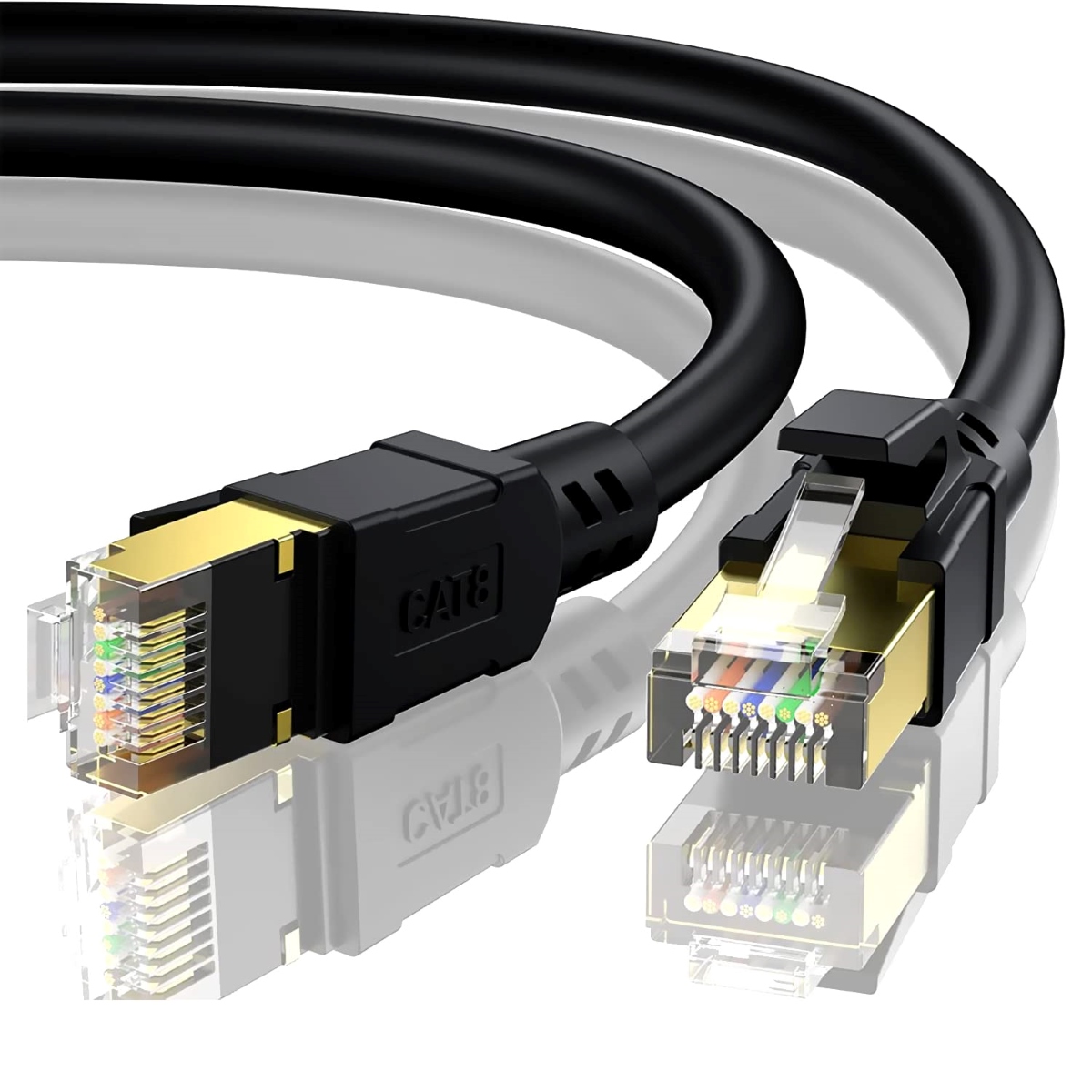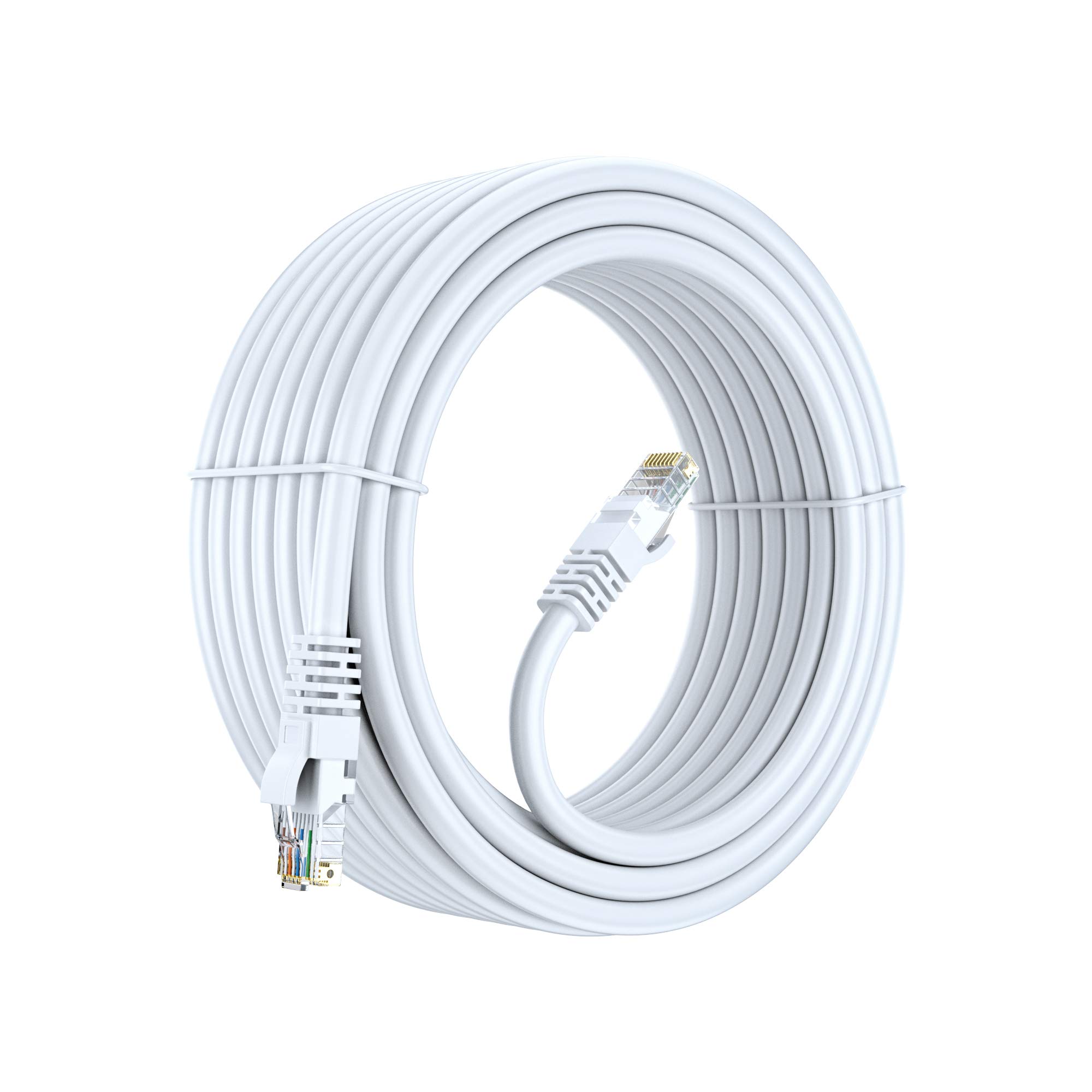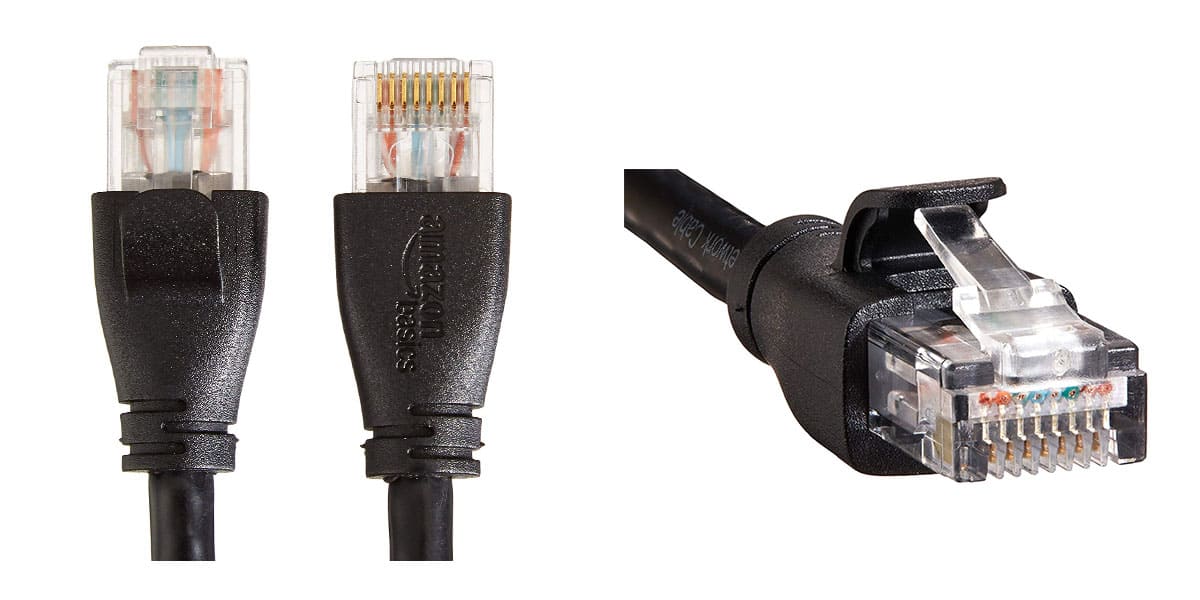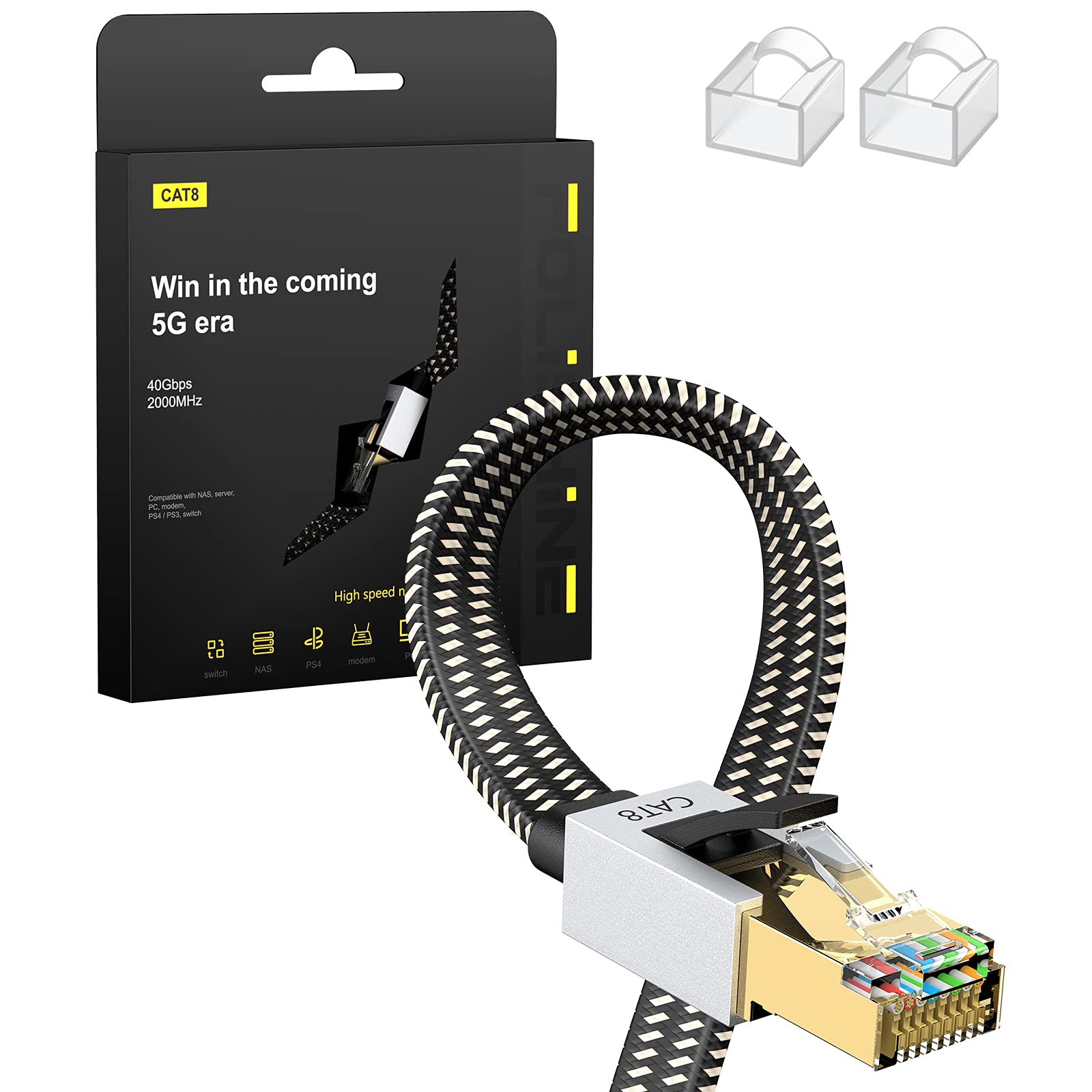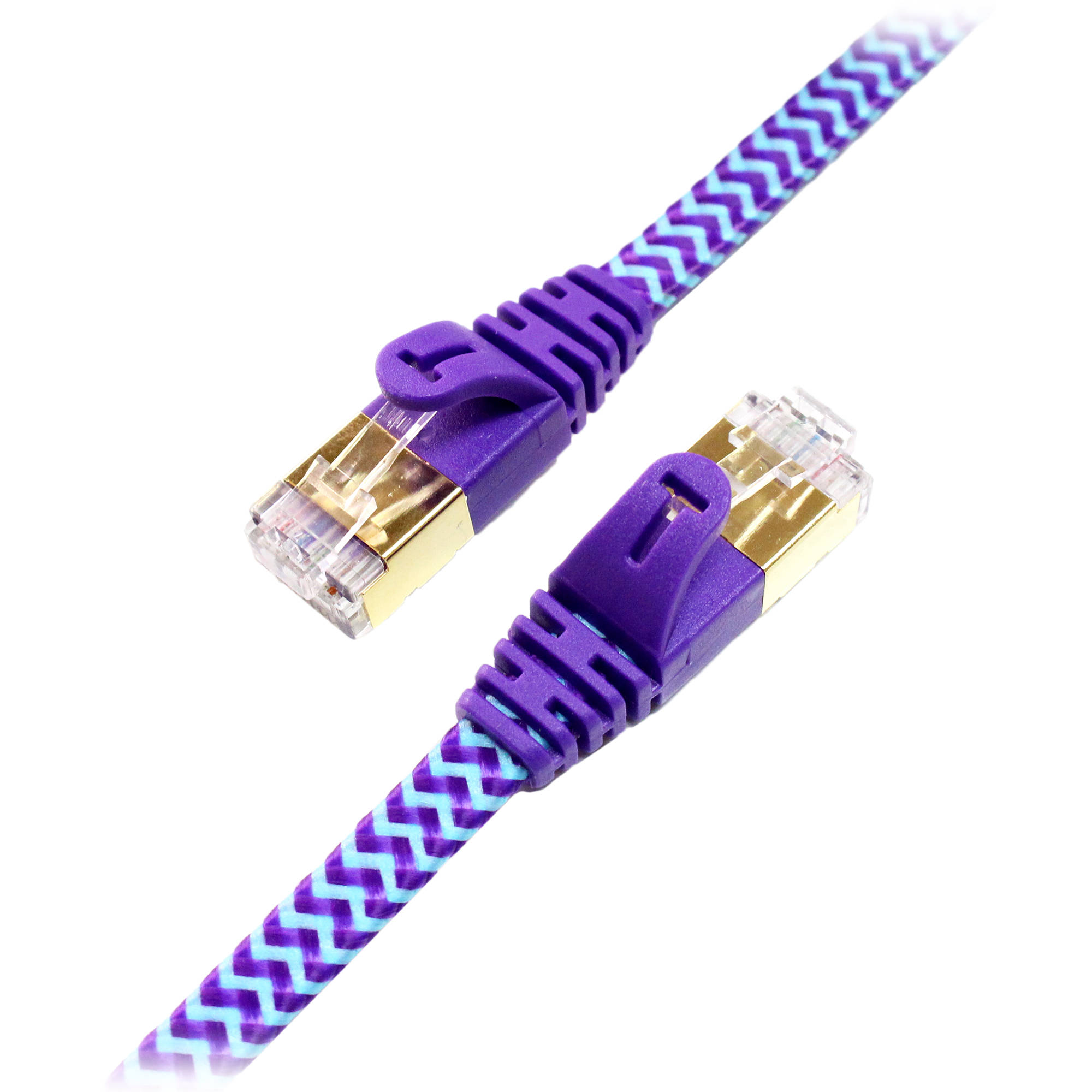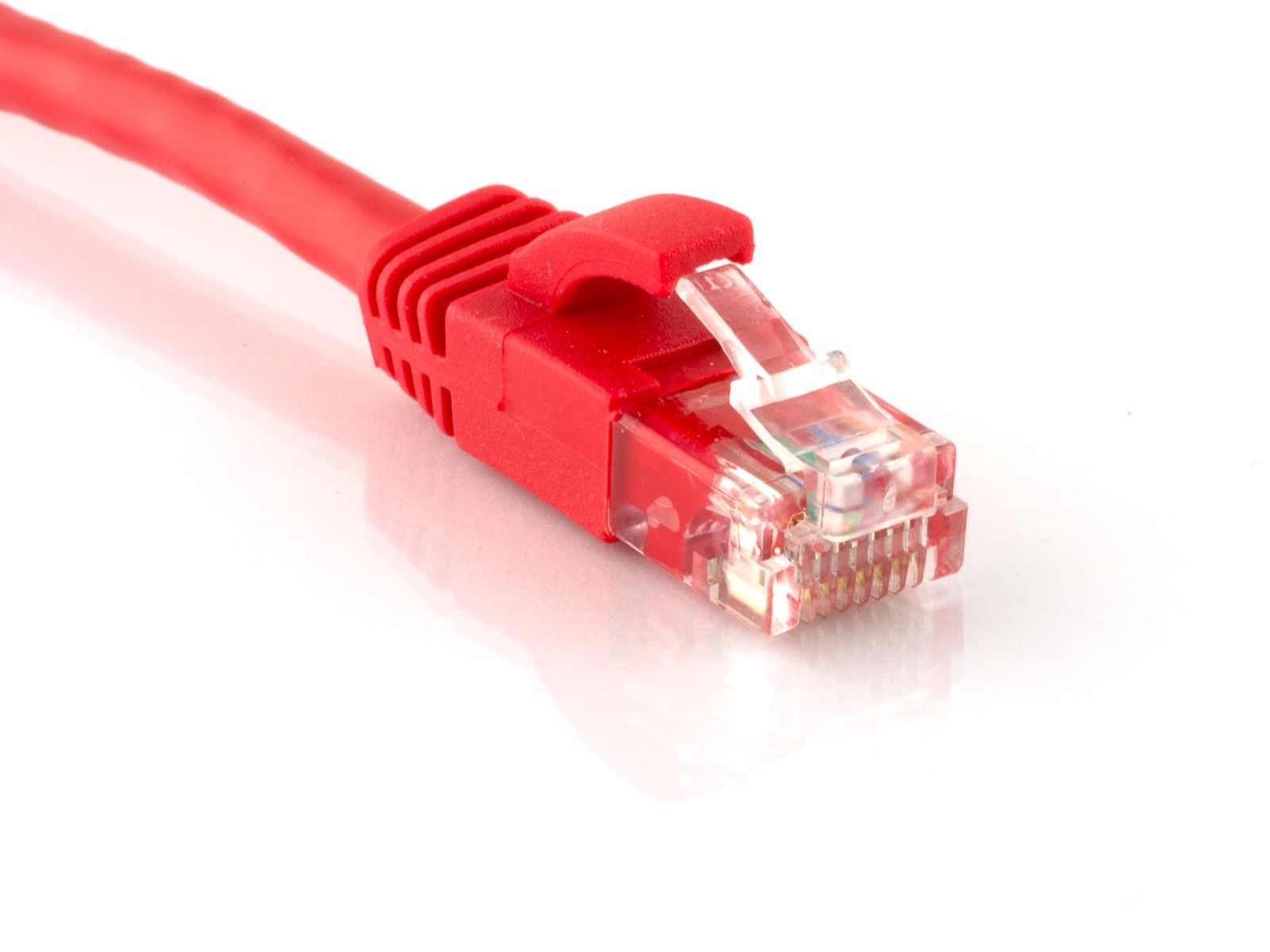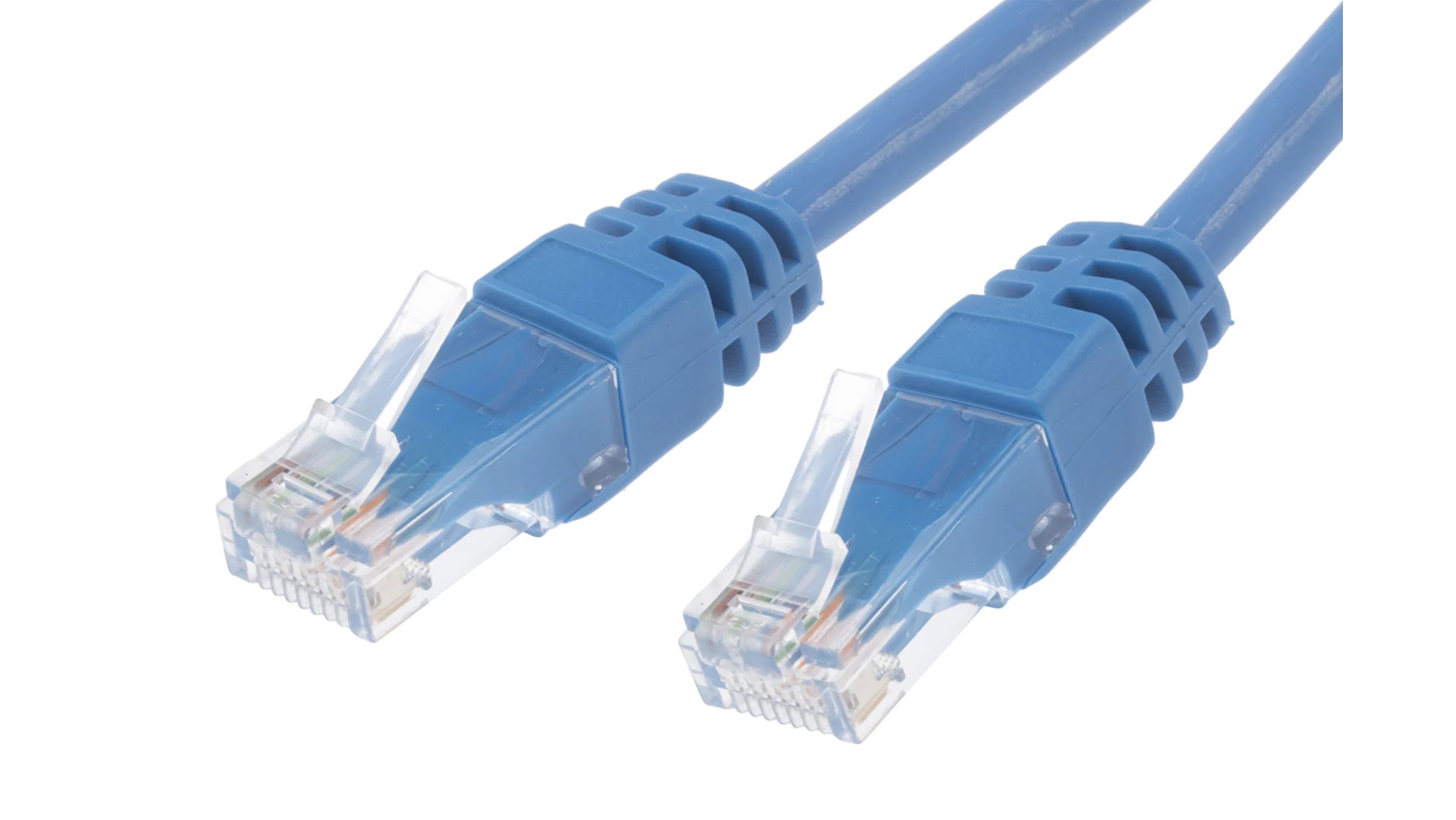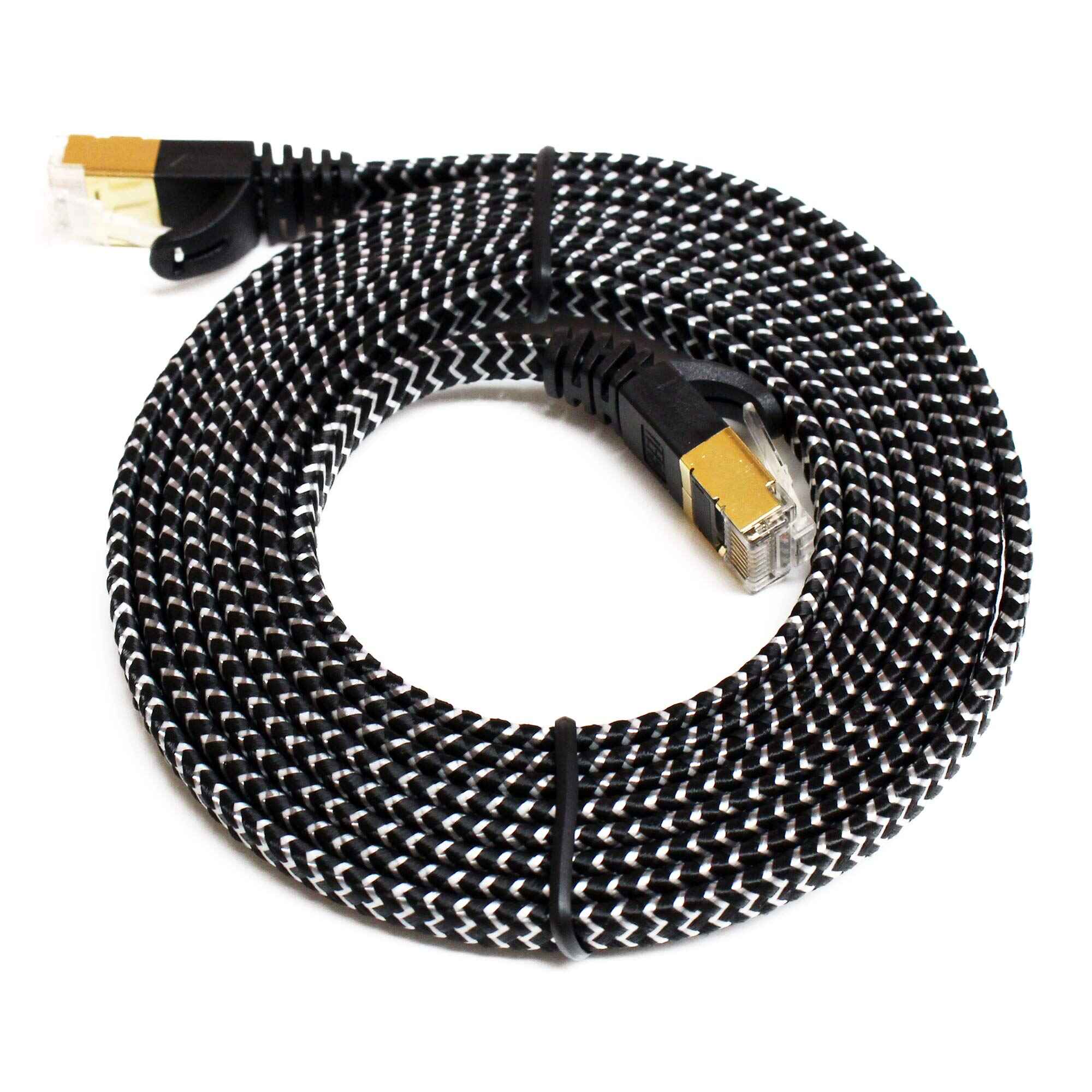Introduction
With the ever-evolving digital landscape, having a reliable and fast internet connection has become crucial in both personal and professional settings. Ethernet cables play a vital role in ensuring stable network connections. One of the latest and most advanced ethernet cable options available is the Cat 8 Ethernet cable.
In this article, we will explore the features, advantages, applications, and considerations of using Cat 8 Ethernet cables. Whether you are a home user looking to improve your gaming experience or a business owner in need of high-speed and secure networking, understanding the benefits and specifications of Cat 8 cables will help you make an informed decision.
Introduced as the next generation of ethernet cables, Cat 8 cables offer exceptional speed and reliability. They are designed to meet the increasing demands of modern networks, providing lightning-fast data transfer rates and optimal performance.
Before delving into the various aspects of Cat 8 Ethernet cables, let’s first understand what sets them apart from other ethernet cable options and why they are gaining popularity among tech enthusiasts and professionals alike.
What is Cat 8 Ethernet Cable?
Cat 8 Ethernet cable, also known as Category 8 cable, is the latest standard in ethernet cables. It is specifically designed to support speeds of up to 40 Gigabits per second (Gbps) over short distances, making it ideal for high-bandwidth applications.
One of the key features of Cat 8 cable is its shielding. It uses an improved and advanced shielding technology, usually utilizing either S/FTP (Shielded/Foiled Twisted Pair) or F/FTP (Foiled/Foiled Twisted Pair) construction. This shielding helps to reduce electromagnetic interference (EMI) and crosstalk, ensuring a more stable and reliable network connection.
Cat 8 cables utilize copper conductors, typically four pairs of twisted cables, with each pair individually shielded. This construction allows for better signal transmission and higher data transfer rates compared to previous ethernet cable standards.
Additionally, Cat 8 cables have a higher bandwidth capacity than previous categories, reaching up to 2,000 MHz. This increased bandwidth allows for faster and more efficient data transmission, making Cat 8 cables a top choice for environments that require high-speed networking, such as data centers, server rooms, and enterprise networks.
Furthermore, Cat 8 cables are backward compatible with previous ethernet standards, which means they can be used in any network infrastructure that supports lower category cables, such as Cat 6 and Cat 7. However, to fully leverage the capabilities of Cat 8 cables, all components within the network, including routers, switches, and network interface cards, must be compatible with the Cat 8 standard.
In summary, Cat 8 Ethernet cables are the latest standard in ethernet cable technology, providing high-speed and reliable network connections. With their advanced shielding, increased bandwidth, and compatibility with previous ethernet standards, Cat 8 cables are a wise choice for those seeking to meet the demands of modern high-bandwidth applications.
Advantages of Cat 8 Ethernet Cable
Cat 8 Ethernet cables come with several advantages that make them a popular choice for those seeking high-speed and reliable networking solutions. Let’s explore some of the key advantages of Cat 8 cables:
- Lightning-Fast Speeds: Cat 8 cables offer unmatched speed, supporting data transfer rates of up to 40 Gbps. This ultra-fast speed is perfect for bandwidth-intensive applications such as 4K and 8K video streaming, online gaming, and large file transfers. With Cat 8 cables, you can enjoy a seamless and lag-free online experience.
- Enhanced Performance: Cat 8 cables provide improved performance due to their advanced shielding, which minimizes electromagnetic interference (EMI) and crosstalk. This ensures a more stable network connection, resulting in minimal latency and improved signal quality.
- Higher Bandwidth: Cat 8 cables have a higher bandwidth capacity, reaching up to 2,000 MHz. This increased bandwidth allows for more data to be transmitted simultaneously, making Cat 8 cables ideal for high-density networking environments where many devices are connected.
- Backward Compatibility: Cat 8 cables are backward compatible with lower category cables, such as Cat 6, Cat 6a, and Cat 7. This means that you can use Cat 8 cables in existing network infrastructures without the need for a complete overhaul. However, it’s important to note that to fully achieve the benefits of Cat 8, all components in the network should be Cat 8 compatible.
- Future-Proof Solution: By investing in Cat 8 cables, you are ensuring that your network infrastructure is prepared for future advancements in technology. As more devices and applications demand higher speeds and bandwidth, Cat 8 cables provide a reliable and future-proof solution.
- Secure and Reliable: The advanced shielding in Cat 8 cables not only reduces electromagnetic interference but also enhances security by preventing outside signals from leaking or intercepting the network data. This ensures a secure and reliable network connection, making Cat 8 cables suitable for sensitive environments such as financial institutions and government organizations.
In summary, Cat 8 Ethernet cables offer lightning-fast speeds, enhanced performance, higher bandwidth capacity, backward compatibility, future-proofing, and improved security. These advantages make Cat 8 cables a top choice for users who require high-speed and reliable networking solutions for their home or business environments.
Applications of Cat 8 Ethernet Cable
Cat 8 Ethernet cables are designed to meet the demands of modern networking applications that require high-speed and reliable connections. Let’s explore some of the key applications where Cat 8 cables excel:
- Data Centers: Cat 8 cables are ideal for data centers that handle vast amounts of data and require fast and stable connections. With their high bandwidth capacity and lightning-fast speeds, Cat 8 cables ensure efficient data transmission between servers, storage devices, and networking equipment.
- Server Rooms: In server rooms, where multiple servers are interconnected, Cat 8 cables provide a robust and high-performance networking solution. They enable rapid communication between servers, reducing latency and ensuring smooth data transfer for critical applications.
- Enterprise Networks: Cat 8 cables are well-suited for large enterprise networks where high-speed connections are essential for efficient collaboration, file sharing, and resource sharing. They facilitate seamless communication between departments and teams, enhancing productivity and workflow.
- Video Streaming and Gaming: For avid gamers and enthusiasts who engage in online gaming or stream high-resolution video content, Cat 8 cables deliver ultra-fast speeds and low latency. This ensures smooth and uninterrupted gameplay experiences, as well as lag-free 4K and 8K video streaming.
- High-Bandwidth Applications: Cat 8 cables are designed to support high-bandwidth applications such as virtual reality (VR), augmented reality (AR), and immersive multimedia experiences. With their exceptional data transfer rates and reduced latency, Cat 8 cables provide the necessary infrastructure to handle the demanding requirements of these applications.
- Video Production and Editing: In video production and editing environments, where large video files need to be transferred quickly and efficiently, Cat 8 cables enable seamless data transfer between video capture devices, editing workstations, and storage systems. This allows for smoother workflow and faster project turnaround time.
- IoT (Internet of Things) Networks: With the rise of IoT devices and smart home technology, Cat 8 cables are well-suited for establishing high-speed and reliable connections between various interconnected devices. Whether it’s controlling smart appliances or managing security systems, Cat 8 cables provide the bandwidth and stability required for seamless IoT integration.
In summary, Cat 8 Ethernet cables find applications in data centers, server rooms, enterprise networks, video streaming and gaming setups, high-bandwidth applications, video production and editing environments, and IoT networks. Their high-speed capabilities, low latency, and reliable connections make Cat 8 cables essential for modern networking requirements in both professional and recreational settings.
How does Cat 8 Ethernet Cable compare to other Ethernet cables?
When comparing Cat 8 Ethernet cables to other ethernet cable standards, it’s important to consider factors such as speed, bandwidth, shielding, and compatibility. Let’s explore how Cat 8 cables fare in comparison:
- Speed and Bandwidth: Cat 8 cables offer the highest speeds among ethernet cable standards, with data transfer rates of up to 40 Gbps. This is significantly faster than Cat 6, Cat 6a, and Cat 7 cables, which typically support speeds of up to 10 Gbps. The increased bandwidth of Cat 8 cables, reaching up to 2,000 MHz, allows for more efficient data transmission.
- Shielding: Cat 8 cables have advanced shielding technology, typically using S/FTP (Shielded/Foiled Twisted Pair) or F/FTP (Foiled/Foiled Twisted Pair) construction. This shielding minimizes electromagnetic interference (EMI) and crosstalk, resulting in a more stable and reliable network connection. In comparison, lower category cables like Cat 6 and Cat 7 have less advanced shielding, making Cat 8 cables better suited for environments with high levels of interference.
- Compatibility: Cat 8 cables are backward compatible with previous ethernet cable standards such as Cat 6, Cat 6a, and Cat 7. This means that Cat 8 cables can be used in existing network infrastructure that supports lower category cables. However, it’s important to note that to fully utilize the capabilities of Cat 8 cables, all components within the network, including routers, switches, and network interface cards, must be compatible with the Cat 8 standard.
- Distance: Cat 8 cables are primarily designed for short-distance connections, typically up to 30 meters. Beyond this distance, the signal quality may degrade. In contrast, Cat 6 and Cat 7 cables can support longer cable runs without signal degradation, making them suitable for longer distance installations.
- Cost: Cat 8 cables are generally more expensive than lower category cables due to their advanced technology and capabilities. The increased speed, bandwidth, and shielding of Cat 8 cables contribute to their higher cost. However, for users who require ultra-fast and reliable network connections, the investment in Cat 8 cables can provide significant benefits in terms of performance and future-proofing.
In summary, Cat 8 Ethernet cables offer superior speed, bandwidth, shielding, and compatibility compared to lower category cables such as Cat 6, Cat 6a, and Cat 7. They excel in environments that require high-speed connections, reduced interference, and the ability to handle bandwidth-intensive applications. However, it’s important to consider the distance requirements and cost when choosing between Cat 8 and other ethernet cable options.
Things to consider before using Cat 8 Ethernet Cable
Before implementing Cat 8 Ethernet cables in your network infrastructure, there are a few important factors to consider. These considerations will ensure that you make an informed decision and maximize the benefits of using Cat 8 cables:
- Network Equipment Compatibility: To fully leverage the capabilities of Cat 8 cables, it’s crucial to ensure that all components in your network infrastructure, including routers, switches, and network interface cards, support the Cat 8 standard. Using Cat 8 cables with incompatible equipment may result in limited performance and slower speeds.
- Cable Length: Cat 8 cables are primarily designed for short-distance connections, typically up to 30 meters. It’s important to assess your network requirements and ensure that the cable length of Cat 8 cables is sufficient for your intended setup. For longer distance installations, you may need to consider alternative ethernet cable options such as fiber optic cables.
- Installation Environment: Cat 8 cables are best suited for environments that require high-speed and reliable connections, such as data centers, server rooms, and enterprise networks. If you are installing Cat 8 cables in a residential setting, it’s important to assess your specific needs and determine whether the higher cost of Cat 8 cables aligns with the demands of your network usage.
- Future-Proofing: While Cat 8 cables offer exceptional speed and performance, it’s important to consider future advancements in technology. Assess your long-term networking requirements and evaluate whether investing in Cat 8 cables provides the necessary future-proofing for your network infrastructure. This includes considering factors such as anticipated increases in data transfer rates and the growth of bandwidth-intensive applications.
- Budget: Cat 8 cables are generally more expensive than lower category cables. It’s important to consider your budget and weigh the cost versus the expected benefits. If your network requirements do not demand the ultra-high speeds and capabilities of Cat 8, it may be more cost-effective to opt for a lower category cable that still meets your needs.
In summary, before implementing Cat 8 Ethernet cables, consider the compatibility of your network equipment, the cable length required for your setup, the installation environment, future-proofing needs, and your budget. By carefully evaluating these factors, you can make an informed decision and ensure that Cat 8 cables align with your desired network performance and requirements.
Installation and Compatibility of Cat 8 Ethernet Cable
When installing Cat 8 Ethernet cables, there are important considerations regarding compatibility and proper installation techniques. Understanding these aspects will help ensure optimal performance and reliability:
- Compatibility: Cat 8 cables are backward compatible with lower category cables, such as Cat 6, Cat 6a, and Cat 7. However, to achieve the full benefits of Cat 8, all components within the network must be compatible with the Cat 8 standard. This includes routers, switches, network interface cards, and other networking equipment. Verify the compatibility of your network infrastructure before installing Cat 8 cables.
- Proper Termination: To ensure reliable connections, proper termination of Cat 8 cables is essential. It is recommended to use connectors specifically designed for Cat 8 cables and follow the manufacturer’s guidelines for termination. Poorly terminated cables can result in signal loss, interference, and reduced performance.
- Quality of Components: To maximize performance and longevity, it’s essential to use high-quality Cat 8 cables and connectors. Cheap or substandard components may result in signal degradation, increased interference, and reduced speeds. Invest in reputable brands and certified Cat 8 components for optimal results.
- Installation Environment: Cat 8 cables are best suited for environments that require high-speed and reliable connections. Before installation, assess the environmental conditions, such as temperature, humidity, and potential sources of interference. It’s important to ensure that the installation environment is suitable for Cat 8 cables to maintain their performance and longevity.
- Avoid Bending and Sharp Turns: Cat 8 cables are sensitive to bending and sharp turns. Avoid sharp bends or kinks in the cables that can cause signal loss or damage. Use proper cable management techniques, such as cable trays or appropriate clips, to ensure that the cables are properly supported and routed without excessive strain.
- Testing and Troubleshooting: After installation, it’s important to test the Cat 8 cables using appropriate network testing equipment. This will help identify any issues or errors in the installation, such as improper termination or signal loss. Regular testing and troubleshooting can ensure that the Cat 8 cables are functioning at their optimum level.
In summary, installing Cat 8 Ethernet cables requires consideration of compatibility, proper termination techniques, the quality of components, the installation environment, and adherence to best practices. By following these guidelines, you can ensure reliable and high-speed network connections with Cat 8 cables.
Conclusion
Cat 8 Ethernet cables are a significant advancement in ethernet cable technology, offering unparalleled speed, bandwidth, and reliability. With their high data transfer rates and advanced shielding, Cat 8 cables are well-suited for applications that require lightning-fast connections, such as data centers, server rooms, and enterprise networks.
When considering the implementation of Cat 8 cables, it’s important to assess the compatibility of your network infrastructure and the specific requirements of your setup. Cat 8 cables provide the best performance when used with compatible network equipment and properly terminated using high-quality components.
While Cat 8 cables excel in high-speed, short-distance connections, it’s important to consider cable length limitations and potential interference sources. Additionally, weighing the cost of Cat 8 cables against your network’s requirements is essential to make an informed decision.
In conclusion, Cat 8 Ethernet cables are a cutting-edge solution for those seeking fast and reliable network connections. Their superior speed, bandwidth, and shielding capabilities make Cat 8 cables ideal for demanding applications, including video streaming, gaming, and high-bandwidth environments. By understanding the advantages, applications, and considerations of Cat 8 cables, you can make the right choice to enhance your network infrastructure and ensure optimal performance for your networking needs.







